TR Review: Godzilla Is Back, Big-Time
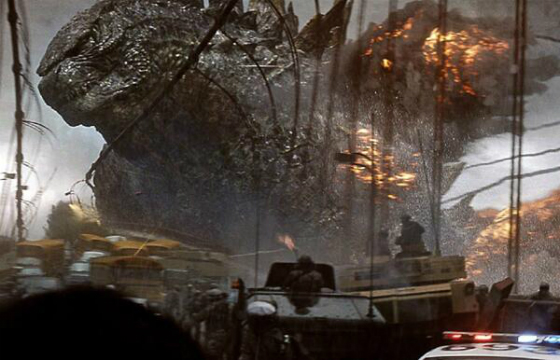 |
Relax – Godzilla’s in good hands.
Oh, I sympathize with any hesitation you have, especially if, like me, you saw English director Gareth Edwards’ Monsters, the film that presumably got him the ‘Zilla gig. Though it made the most of its low budget, his tale of Americans trying to get back home from Mexico across a border inhabited by giant space octopuses struck me as insufferably simplistic in its allegory. Nothing like having foreigners lecture us on an issue as complex as illegal immigration by just flat-out implying it’s all our fault, and with Godzilla also historically being a political parable, there was every reason to fear Edwards could drop the ball there too.
Fortunately, that didn’t happen. Instead, Edwards has somehow morphed into the best directorial impersonation of a young Steven Spielberg I think I’ve ever seen.
Every time I make the Spielberg comparison out loud, somebody brings up JJ Abrams’ Super 8, so let’s nip that in the bud right now. Super 8 shares Spielbergian subject matter – nostalgia, kids, aliens, etc. – but the filmmaking style isn’t remotely like his, with its prolonged “mystery box” structure and utterly confusing finale. Love or hate Steven, one thing you can seldom accuse him of is being unclear; his stories play coherently to all ages, and if anything lack ambiguity.
On the other hand, a movie about giant monsters causing mass destruction isn’t really a tale The Beard would gravitate towards, but Edwards’ style of telling it mirrors that sense of wonder at the unknown that E.T. and Close Encounters had (E.T., often remembered as overly sentimental, is actually shot and edited a lot like a horror movie, in deliberate contrast to its more kid-friendly subject matter). Edwards lingers on small details and parallels – a young boy’s feet tramping across a bedroom floor littered with tiny army men foreshadows what’s to come, while a Japanese classroom is full of visual cues that recall large moths and flying creatures.
More than once, the oncoming destruction is anticipated first by a detail seen only by a child, which then snowballs into large-scale disaster; cannily, Edwards mostly shows us the monsters (yes, there’s more than one) from a bystander’s perspective. In other words, if a kaiju falls in the forest and none of our principal characters are there to see it, it doesn’t happen…onscreen. At least until the finale when, in the tradition of all Godzilla movies, things culminate in a city-smashing smackdown that ought not leave anyone feeling cheated.
Presumably because Pacific Rim essentially claimed the word “kaiju” for English-language movies, Godzilla invents and substitutes the term MUTO, a mostly meaningless acronym for Massive Unidentified Terrestrial Organism (they could save time and just say “big fucker,” but that might be a harder sell on action figure packaging). The MUTOs serve a dual purpose this time out when it comes to metaphor – on the one hand, they’re like the EPA gone berserk, as they eat radiation (arguably beneficial) but care naught for killing masses of people to do it, and use large electromagnetic pulses to defend themselves. The deaths are not glossed over, either – Man of Steel climax-haters will be pleased to know that the consequences of overturned buildings are made quite evident. And yes, there is some really goofy exposition as to why these things exist, but it’s just thrown out there, practically daring you to make fun of it – rather than elaborating with pseudoscience, the movie just rolls along, which feels like a solid call.
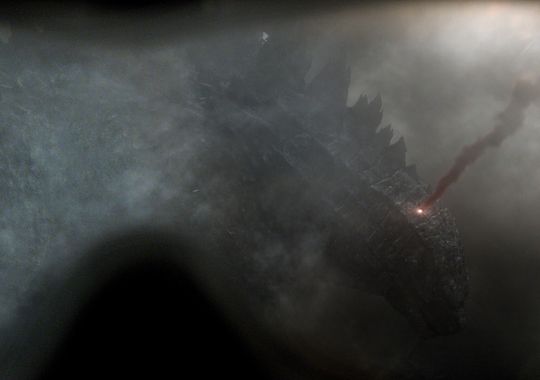 |
On a smaller scale, however, the MUTOs serve as visual representations of repressed family trauma. Ford Brody (Aaron Taylor-Johnson), whose surname is presumably an intentional Spielberg tribute, has tried to forget that one time when he was a kid in Japan , and an earthquake hit the nuclear plant where both his parents worked, forcing father Joe (Bryan Cranston) to seal mom Sandra (Juliette Binoche, in a weirdly small role) in a virtual tomb of radioactive steam. Joe’s been obsessed with finding the cause ever since, while Ford wants to move on without actually emotionally dealing with the issue. Considering it turns out to be a giant monster responsible, they’re both going to have to come to terms.
Godzilla himself is a sort of agent of Gaia, an alpha predator out to maintain the balance of nature. In other words, he’s kind of the good guy, as in most of his other movies – unlike prior re-maker Roland Emmerich, Edwards and producer Thomas Tull get that we inherently want to root for him. The military, of course, is suspicious, and reasonably so since it’s no big thing for big G to flatten buildings with a single stomp. Speaking of Emmerich, the blocky heads and egg-laying goals of the other monsters suggests a subtle dig at what fans today call “GINO” (1998’s “Godzilla In Name Only”).
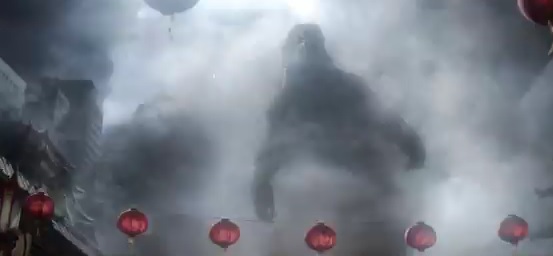 |
While prior Toho films have varied in tone and goal, this new Godzilla feels like the first of the movies to truly have it all – the nuclear fears and pervasive danger of the original Gojira are here (our entire history of atomic weapons turns out to have been a grand-scale attempt to kill not Commies, but Godzilla), but so are the monster battles that are just plain fun. The formulaic beats you’d expect and want as a fan are here too – the inevitable moments where the military attack and their weapons have little effect, for example.
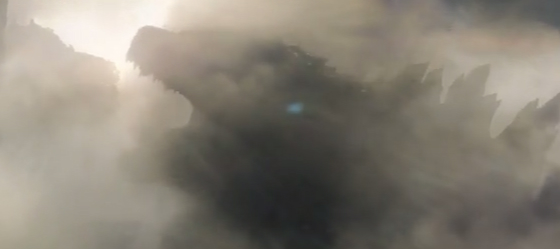 |
Johnson adds nothing to the film as lead, but nor does he subtract from it – playing an average military guy with specialized bomb-disposal skills, he comes off as exactly that: average. As his wife, Elizabeth Olsen has little to do but look concerned, but she’s good enough at it that she suffices in the moment. Cranston, in full-on ham mode, chews almost as much scenery as the MUTOs, but if you were hoping to see him be an action hero, don’t; Johnson’s the one who gets the derring-do duty, at which he is okay but not especially Kick-Ass. That said, I’ll take him any day over the cartoonish international caricatures of Pacific Rim.
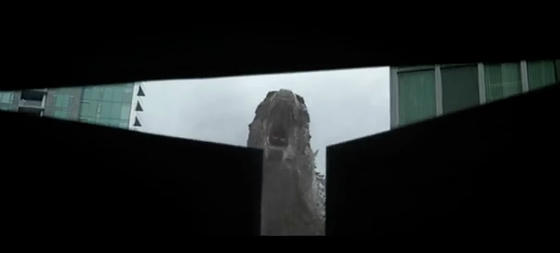 |
While the movie is exactly what you’d hope it’d be in many respects, I do have some minor nitpicks – principally, if nuclear explosions failed to kill Godzilla, why does he show any pain at all when confronted with handheld weaponry, however heavy? And what’s up with the Cylon-like eyes on the MUTOs? They feel glaringly artificial in a way that’s distracting.
Not that the distraction lasts, mind you. It only takes a fraction of Godzilla’s rusty roar to snap us back into realizing that, yep, this is awesome. And a true welcome back worthy of a screen icon. See this one in 3D Imax if you can, as the literal biggest star in the world deserves the grandest scale of all.
